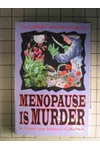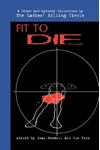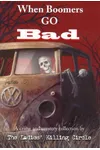Picture a group of six Ottawa women spinning chilling tales of murder and mystery—meet the Ladies’ Killing Circle! This dynamic collective of Canadian crime writers burst onto the scene in the 1990s, transforming the landscape of mystery fiction with their witty, wicked anthologies. Known for their sharp storytelling and camaraderie, they crafted stories that ranged from darkly brooding to laugh-out-loud funny, earning critical acclaim and a loyal following.
From their first anthology to their lasting influence, the Ladies’ Killing Circle proved that crime fiction could be as diverse as it is thrilling. Let’s dive into their journey, from their Ottawa roots to their indelible mark on Canadian literature.
The Making of the Ladies’ Killing Circle
In 1992, six Ottawa-based women—Vicki Cameron, Audrey Jessup, Mary Jane Maffini, Joan Boswell, Sue Pike, and Linda Wiken—formed a critique group to hone their mystery short stories. United by a passion for crime fiction, they shared drafts, sharpened their skills, and dreamed big. Their breakthrough came when Vicki Cameron proposed compiling an anthology, leading to a partnership with RendezVous Crime. The result? Their debut, The Ladies’ Killing Circle (1995), a collection of twelve stories and haunting poems by Joy Hewitt Mann, which set the stage for their meteoric rise.
The group’s Ottawa roots shaped their perspective, blending urban sophistication with a knack for small-town intrigue. Their collaborative spirit and diverse backgrounds—ranging from librarians to psychologists—infused their work with authenticity and variety, making their anthologies a treasure trove of Canadian storytelling.
The Ladies’ Killing Circle’s Unforgettable Stories
The Ladies’ Killing Circle produced seven anthologies, each a masterclass in mystery. Their debut, The Ladies’ Killing Circle (1995), featured Mary Jane Maffini’s award-winning story “Cotton Armour,” which snagged an Arthur Ellis Award for Best Short Story. Cottage Country Killers (1997) leaned into quintessentially Canadian settings, with tales of murder in idyllic lakeside retreats. Menopause Is Murder (1999) brought humor to midlife mayhem, while Bone Dance (2003) used music-inspired themes to chilling effect, showcasing stories tied to songs like “Wake Up Little Suzie.”
Their final anthology, Going Out With a Bang (2008), spanned comic to noir, cementing their reputation for versatility. The group’s style was a delightful mix: some stories dripped with psychological tension, others sparkled with humor, but all were tightly plotted and richly atmospheric. Themed poems by award-winning poets like Joy Hewitt Mann added a lyrical touch, making each collection a unique blend of prose and poetry.
Individual members shone brightly too. Barbara Fradkin’s gritty Inspector Green series and Linda Wiken’s cozy Dinner Club Mysteries grew from the group’s creative crucible, while Mary Jane Maffini and Joan Boswell crafted their own acclaimed novel series, proving the Circle’s anthologies were a launching pad for solo success.
Why the Ladies’ Killing Circle Matters
The Ladies’ Killing Circle didn’t just write stories—they reshaped Canadian crime fiction. Their anthologies, which published forty-eight women, provided a platform for female voices in a male-dominated genre, inspiring a new generation of writers. Their work earned multiple Arthur Ellis Awards and nominations, and in 2012, they received the Grant Allen Award for their pioneering contributions to Canadian mystery writing.
Their legacy endures through their influence on groups like the Mesdames of Mayhem and the continued success of members like Barbara Fradkin and Linda Wiken. By blending humor, heart, and horror, the Ladies’ Killing Circle made crime fiction accessible and irresistible, leaving an indelible mark on Canada’s literary landscape.
- Founded: 1992 in Ottawa, Canada
- Key Works: The Ladies’ Killing Circle, Cottage Country Killers, Bone Dance, Going Out With a Bang
- Awards: Multiple Arthur Ellis Awards, Grant Allen Award (2012)
Snag The Ladies’ Killing Circle anthology and dive into their thrilling world of mystery—your next favorite whodunit awaits!



